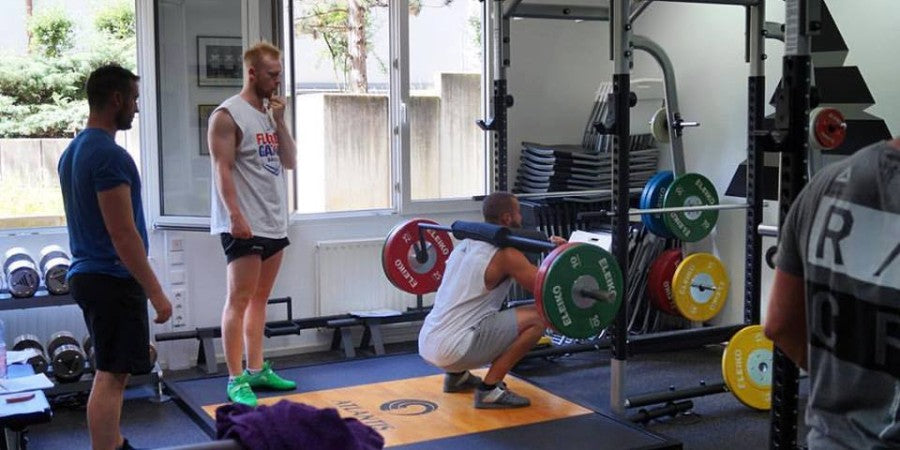The barbell squat is one of the most effective exercises for recruiting lots of muscle fiber, improving mobility, and building strength throughout the body. Provided it is done correctly. These three tips will help you get the most out of your squat:
1. Elbows under the dumbbell
The more upright you can keep your upper body when you squat, the shorter the horizontal distance between the barbell and the L5 vertebra. This results in less compression of the lumbar spine. The more you lean forward, the more strain it puts on your lower back and discs - which is bad. Whether your upper body stays upright is largely determined by the position of your elbows during the squat. These should be directly vertically below the barbell at all times, preventing the upper body from tipping forward.
2. Go deep
Like any other joint, the knee joint should also be trained over its entire range of motion and thus muscularly secured and stabilized. The vastus medialis, the teardrop shaped portion of the quadriceps on the lower inner thigh, is one of the two critical muscles in stabilizing the knee joint. Training in the range of motion below 90° in the knee joint is necessary to recruit and strengthen all vastus medialis muscle fibers. And the stronger the vastus medialis becomes, the more stable your knee joint is. Doing half squats, on the other hand, destabilizes the knee joint by creating a muscular imbalance. In addition, in the deep squat you stretch all the large muscles of the hip joint such as the gluteaus, the quadriceps and the erector spinae and improve the mobility of your ankle joint. This will improve your mobility and prevent injuries.
3. Slower eccentric portion of movement for more control, muscle growth and strength gain
In addition to the training weight, the duration of the exercise (TUT = Time Under Tension), which results from the sum of the duration of the individual repetitions of a set, is decisive for muscle growth and a certain training effect.
10 squats performed in a total of 30 seconds (2010 tempo = 2 seconds eccentric, no pause at turning point, 1 second concentric, no pause at starting position) have less Training Effect than 10 squats with the same weight performed in 50 seconds become (4010 pace). The eccentric part of the movement contributes significantly more to muscle growth and increased strength than the concentric part. In addition, you can control the weight better and prevent injuries and unclean technique.
Try these tips the next time you've squatted differently and you'll get a more technically accurate squat and better training effect. I wish you success!
More about the optimal exercise and variants of the squat at the next YPSI Hypertrophy Day on September 10th with Wolfgang Unsöld at the YPSI in Stuttgart...
Picture: Personal trainer Malte Primus from Berlin doing a squat with the Safety Squat Bar at the YPSI Training Camp with Dr. Peter Lundgren

